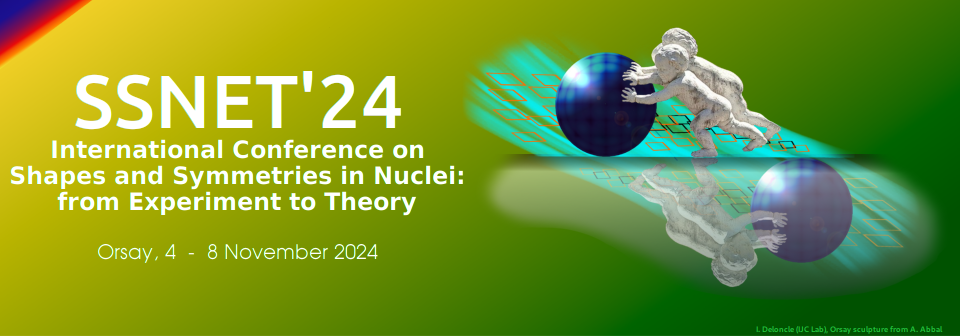Orateur
Description
The cadmium isotopes ($Z\!=\!48$) since long have been considered as textbook examples of spherical-vibrator motion and U(5) dynamical symmetry in nuclei. On the other hand, detailed studies, using complementary spectroscopic methods, have provided evidence for marked deviations from such a structural paradigm [1,2]. Previous attempts to explain the observed discrepancies in $E2$ decays relied on strong mixing between vibrational and intruder states and ultimately proved unsuccessful. Two approaches have been proposed to address these unexpected findings. The first questions the spherical-vibrational character of the $^{110,112}$Cd isotopes, replacing it with multiple shape coexistence of states in deformed bands, a view qualitatively supported by a beyond-mean-field calculation with the Gogny D1S energy density functional [3,4]. A second approach is based on the recognition that the reported deviations from a spherical-vibrator behavior show up in selected non-yrast states, while most states retain their vibrational character. In the terminology of symmetry, this implies that the symmetry in question is broken only in a subset of states, hence is partial [5]. Such a U(5) partial dynamical symmetry (PDS) approach was applied to $^{110}$Cd [6].
In the present contribution, we show that the empirical data in $^{110-116}$Cd is consistent with a vibrational interpretation and good U(5) symmetry for the majority of low-lying normal states, coexisting with a single deformed $\gamma$-soft band of intruder states. The observed deviations from this paradigm are properly treated by an Hamiltonian with U(5) PDS acting in the sector of normal states, which are weakly coupled to SO(6)-like intruder states [7]. The results demonstrate the relevance of persistent symmetries and related notion of U(5) PDS to this series of isotopes.
This work was done in collaboration with J.E. Garcia-Ramos (Huelva), N. Gavrielov and P. Van Isacker (GANIL).
[1] P. E. Garrett, K. L. Green and J. L. Wood, Phys. Rev. C 78 (2008) 044307.
[2] P. E. Garrett, J. Bangay, A. D. Varela, G. C. Ball et al., Phys. Rev. C 86 (2012) 044304.
[3] P. E. Garrett, T. R. Rodriguez, A. D. Varela et al., Phys. Rev. Lett. 123 (2019) 142502.
[4] P. E. Garrett, T. R. Rodriguez, A. Diaz Varela et al., Phys. Rev. C 101 (2020) 044302.
[5] A. Leviatan, Prog. Part. Nucl. Phys. 66 (2011) 93.
[6] A. Leviatan, N. Gavrielov, J. E. Garcia-Ramos and P. Van Isacker. Phys. Rev. C 98 (2018) 031302(R).
[7] N. Gavrielov, J.E. Garcia-Ramos, P. Van Isacker and A. Leviatan, Phys. Rev. C 108 (2023) L031305.

